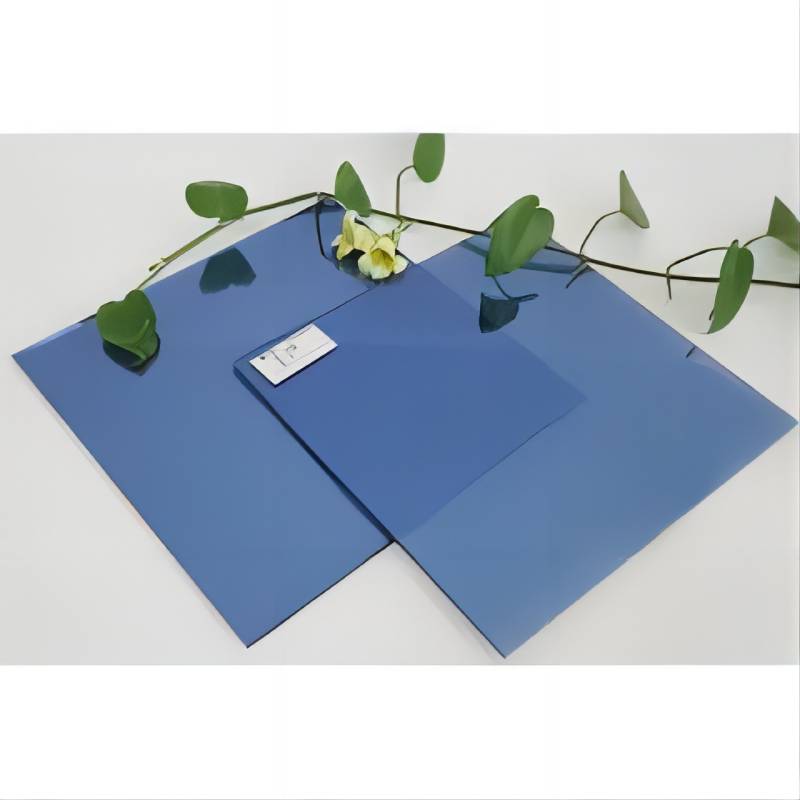Low Iron Glass The Clear Choice for Modern Applications
In the realm of materials science, glass has always held a prominent place due to its versatility, aesthetic appeal, and durability. However, not all types of glass are created equal. One variant that has gained significant attention in recent years is low iron glass. Distinguished by its unique composition that minimizes iron content, low iron glass offers advantages that are transforming various industries, especially architecture, solar energy, and automotive applications.
Understanding Low Iron Glass
Traditional glass is composed primarily of silica, soda, and lime, with trace amounts of iron oxide often present. This iron content can impart a greenish tint to the glass, which becomes particularly noticeable in thicker panes. Low iron glass, on the other hand, is manufactured with refined raw materials that significantly reduce the iron oxide content. This results in a glass that is exceptionally clear and has a higher light transmittance compared to regular glass.
The transparency of low iron glass can reach up to 91% light transmittance, which allows for more natural light to penetrate spaces. This high clarity is particularly desirable in applications where visibility and aesthetics are paramount, such as in modern architecture, where expansive glass facades and large windows create an inviting atmosphere.
Architectural Marvels
In architecture, the use of low iron glass can elevate the design and functionality of structures. Buildings that feature large glass surfaces can create a seamless connection between indoor and outdoor environments, enhancing the aesthetic appeal while maximizing daylight use. The clarity of low iron glass means that views of the surrounding landscape are unobstructed, allowing architects and designers to create stunning visual effects.
Moreover, low iron glass contributes to energy efficiency. By allowing more natural light into a building, it can reduce the reliance on artificial lighting, leading to significant energy savings. This is particularly beneficial in commercial buildings and residential homes aiming for sustainability and lower utility costs. With the growing trend towards eco-friendly architecture, low iron glass is becoming an integral part of green building practices.
low iron glass
Solar Energy Applications
Low iron glass also plays a crucial role in the solar energy sector. Photovoltaic panels require high levels of transparency to capture sunlight efficiently, and the use of low iron glass can significantly enhance the performance of solar cells. Its superior light transmittance means that more sunlight reaches the solar cells, leading to higher energy conversion rates. As the world increasingly shifts towards renewable energy sources, the demand for low iron glass in solar panel manufacturing is expected to rise.
Additionally, because low iron glass offers excellent durability and weather resistance, it is ideal for outdoor applications, ensuring that solar panels maintain their efficiency despite exposure to varying environmental conditions. The choice of low iron glass can thus contribute to a longer lifespan and better performance of solar energy systems.
Automotive Industry Impact
In the automotive sector, low iron glass is making its mark in creating lighter, more efficient vehicles. Glass elements such as windshields and side windows made from low iron glass are not only clearer but also lighter than their traditional counterparts. This reduction in weight can lead to enhanced fuel efficiency and better overall performance of vehicles.
Furthermore, improving visibility through clearer glass contributes to road safety, enabling drivers to have unobstructed views of their surroundings. As the automotive industry continues to innovate with new materials and designs, low iron glass is poised to be a critical component.
Conclusion
Low iron glass represents a significant advancement in glass technology, providing superior clarity, energy efficiency, and versatility across various applications. From modern architectural designs that blend beauty with functionality to enhanced performance in solar energy systems and automotive innovations, the benefits of low iron glass are being recognized and embraced. As the demand for sustainable and aesthetically pleasing materials increases, low iron glass is likely to become a staple in both commercial and residential projects, making it a clear choice for the future.
 Afrikaans
Afrikaans  Albanian
Albanian  Amharic
Amharic  Arabic
Arabic  Armenian
Armenian  Azerbaijani
Azerbaijani  Basque
Basque  Belarusian
Belarusian  Bengali
Bengali  Bosnian
Bosnian  Bulgarian
Bulgarian  Catalan
Catalan  Cebuano
Cebuano  Corsican
Corsican  Croatian
Croatian  Czech
Czech  Danish
Danish  Dutch
Dutch  English
English  Esperanto
Esperanto  Estonian
Estonian  Finnish
Finnish  French
French  Frisian
Frisian  Galician
Galician  Georgian
Georgian  German
German  Greek
Greek  Gujarati
Gujarati  Haitian Creole
Haitian Creole  hausa
hausa  hawaiian
hawaiian  Hebrew
Hebrew  Hindi
Hindi  Miao
Miao  Hungarian
Hungarian  Icelandic
Icelandic  igbo
igbo  Indonesian
Indonesian  irish
irish  Italian
Italian  Japanese
Japanese  Javanese
Javanese  Kannada
Kannada  kazakh
kazakh  Khmer
Khmer  Rwandese
Rwandese  Korean
Korean  Kurdish
Kurdish  Kyrgyz
Kyrgyz  Lao
Lao  Latin
Latin  Latvian
Latvian  Lithuanian
Lithuanian  Luxembourgish
Luxembourgish  Macedonian
Macedonian  Malgashi
Malgashi  Malay
Malay  Malayalam
Malayalam  Maltese
Maltese  Maori
Maori  Marathi
Marathi  Mongolian
Mongolian  Myanmar
Myanmar  Nepali
Nepali  Norwegian
Norwegian  Norwegian
Norwegian  Occitan
Occitan  Pashto
Pashto  Persian
Persian  Polish
Polish  Portuguese
Portuguese  Punjabi
Punjabi  Romanian
Romanian  Russian
Russian  Samoan
Samoan  Scottish Gaelic
Scottish Gaelic  Serbian
Serbian  Sesotho
Sesotho  Shona
Shona  Sindhi
Sindhi  Sinhala
Sinhala  Slovak
Slovak  Slovenian
Slovenian  Somali
Somali  Spanish
Spanish  Sundanese
Sundanese  Swahili
Swahili  Swedish
Swedish  Tagalog
Tagalog  Tajik
Tajik  Tamil
Tamil  Tatar
Tatar  Telugu
Telugu  Thai
Thai  Turkish
Turkish  Turkmen
Turkmen  Ukrainian
Ukrainian  Urdu
Urdu  Uighur
Uighur  Uzbek
Uzbek  Vietnamese
Vietnamese  Welsh
Welsh  Bantu
Bantu  Yiddish
Yiddish  Yoruba
Yoruba  Zulu
Zulu 

